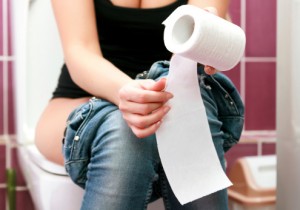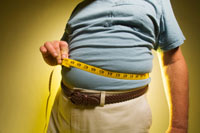The bladder problem you didn’t know you had
 When you enter a restaurant, movie theatre, even someone’s home, is “where are the bathrooms?” the first thing you think of? For many of us, finding out the location of the closest restroom is an everyday reality, as leaky bladder, urinary urgency and frequency plague us. In fact, this constant thinking about the bladder has been coined into a term known as “bladder on the brain,” which is the continuous awareness of one’s bladder.
When you enter a restaurant, movie theatre, even someone’s home, is “where are the bathrooms?” the first thing you think of? For many of us, finding out the location of the closest restroom is an everyday reality, as leaky bladder, urinary urgency and frequency plague us. In fact, this constant thinking about the bladder has been coined into a term known as “bladder on the brain,” which is the continuous awareness of one’s bladder.
In order to know if you have bladder on the brain, it’s important to be aware of how a bladder is supposed to function and compare it to what you experience on a daily basis.
Normal function of the bladder
The average female bladder can hold up to 10 to 16 ounces of liquid – think of a Starbucks grande beverage cup. Trips to the bathroom should occur every three to four hours and no more than twice throughout the nighttime hours. Do keep in mind though, this may fluctuate depending on the beverage you had prior to bed – for example, coffee increases urination.
When the urge to urinate arises, it should not be painful and you should be able to hold it in for a short while without discomfort.
When you do urinate, once again, you shouldn’t experience any pain and you shouldn’t be leaking. If you experience the opposite of any of these normal bladder functions, then that could be an indication of a weak or leaky bladder.
Tips to maintain a strong, healthy bladder
If you are concerned about your bladder, there are easy and quick steps you can take immediately. For starters, pay attention to the types of beverages you are consuming and how often you are drinking them. A good rule of thumb is to drink to your thirst in order to reduce the risk of overdrinking or increasing bladder on the brain. Here are some other tips to maintain a strong, healthy bladder.
- Urinate when you feel the need to – this should be every three to four hours. If it’s more or less, you may wish to speak to your doctor. Furthermore, don’t hold in your urine, as this increases the risk of urinary infections, which overtime can weaken your bladder.
- Choose water as your beverage of choice.
- Recognize that the more you drink, the more you will have to urinate. Before you panic that you’ve gone to the bathroom numerous times, take a moment to think of what you’ve been drinking throughout the day.
- Make sure your bowel movements are regular.
- Maintain a healthy weight and exercise. Being overweight has been linked to an increase in urinary urgency, frequency, and leakage.
Bladder problems can be a real struggle and can be quite common through aging, but they don’t have to happen to you as long as you take the necessary steps to keep your bladder strong and healthy. If you do experience symptoms of a weak bladder, speak with your doctor about treatment methods.
Are you at risk for this serious bladder problem?
Many changes occur to our bladder as we age and the most common is overactive bladder (OAB). An overactive bladder can be quite troublesome, as it consists of sudden, immediate urges to use the bathroom and even involuntary loss of urine – incontinence. But less commonly discussed is an underactive bladder (UAB), which can pose its own series of problematic symptoms if untreated. Continue reading…
-
Best Weight Loss Practices
The best practices for permanent weight
-
How To Make Sleep Your Weight Loss Buddy
My friend, Gail, has been a restless sleeper since childhood. Its rare
-
The Diet Solution Program Promises You a New Body
Written by Rutgers University graduate, physical exercise specialis
-
Buyer Beware Purchasing Fat Burners And Other Supplements Online
Each month I receive hundreds of e-mails from consumers who have been
-
What To Eat For Breakfast?
We all know that breakfast is the most important meal of the day, h
-
Weight Loss Motivation Strategy - A Guide To Be Fit And Happy
When we are too lazy to do things, is there really a motivation strate
- DON'T MISS
- Holidays Can Be Healthy, It's All in the Planning!
- Is Your Dream Body Painful?
- Is Lipozene A Scam?
- 12 Unhealthy Foods Nutritionists Eat
- Your Best Workout Routine is being Prepared
- If You Really Want To Lose Weight, Stop Doing These 5 Things!
- Hydration for Weight Loss, Anti-Aging and Energy
- Benefits Of Weight Training
- Getting A Flat Stomach - Cardio Versus Weight Training Discussed
- Capsiplex Surely Will Help You Drop Weight




